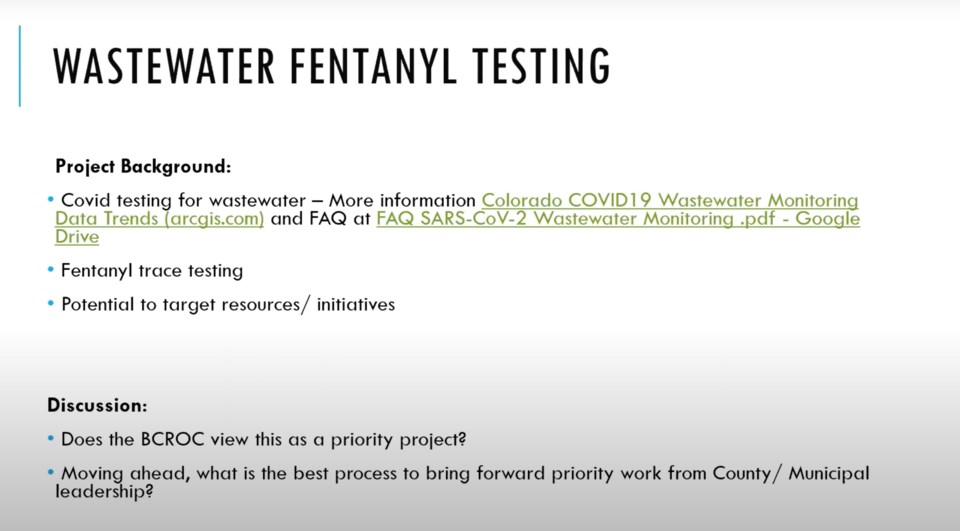The Boulder County Regional Opioid Council explored two methods of locating opioid usage in the county on Tuesday.
The Boulder County Regional Opioid Council is responsible for allocating $17,078,153 of opioid settlement money over the span of 18 years. So far, fentanyl wastewater testing and an overdose mapping plan were brought forth as a possible use of the money.
Wastewater testing examines the concentration of various chemicals in wastewater. The method became popular in 2020 when COVID-19 was at its highest levels. Results from the testing allowed for the county to localize areas with high COVID levels and formulate response plans, according to the council. It may also provide the county with helpful information on fentanyl usage.
Wastewater testing can paint a general picture of where opioid usage is prevalent, according to a study done by the National Institute on Drug Abuse, or NIDA. In the study, wastewater testing was done by placing sampling devices inside ten manholes in a suburb of North Carolina that was predicted to have high opioid usage. Concentrations of chemicals including opioids — like fentanyl — were sampled.
Researchers commonly only have access to opioid users that come in contact with the healthcare system, according to NIDA researchers.
“The researchers were able to identify correlations between opioid overdose rates and the detection of treatment or overdose reversal drugs at the various sites,” the study read.
Similar testing may not be completely viable for the county, however. Separating illegal usage and medical usage of the drug is difficult, and the exact location is a challenge to decipher, said Boulder County Public Health Acting Executive Director Lexi Nolen.
County officials were unsure how useful the wastewater testing results would be.
“If other cities are doing this testing, what are they doing with the results? How are they providing education based on the results?” questioned Boulder County Housing Director Susan Caskey.
“What process do we set up to not have people go down huge amounts of work that could be better spent elsewhere?” asked Boulder County Manager Nuria Rivera-Vandermyde.
The Overdose Detection Mapping Application Program, or ODMAP, is another method being explored for the purpose of creating a focused map of fentanyl overdoses in Boulder County. ODMAP is a web program that allows first responders to report the location of opioid overdoses. First responders also enter the exact time of an incident and the status of the person as fatal or non-fatal during overdose calls through the web program.
Although it doesn’t aid in locating general opioid usage, ODMAP would pinpoint the locations of overdoses and provide location accuracy, according to the ODMAP website.
“Historically, we’ve had trouble getting information over where overdoses were occurring, particularly deaths because there was a long lag period from the coroner's office. We would learn way after the event, and this mapping tool will give us much more just-in-time information about where we’re seeing use and overdoses in the county,” Nolen said.
With the information gained from the ODMAP or wastewater testing, the county could have a better understanding of where resources are needed, according to Nolen. Results could also serve as a measure of success with the programs the opioid money will fund.
The council came to an agreement that more information is needed to move forth with wastewater testing and ODMAP. They will continue to explore the two methods in future council meetings.



